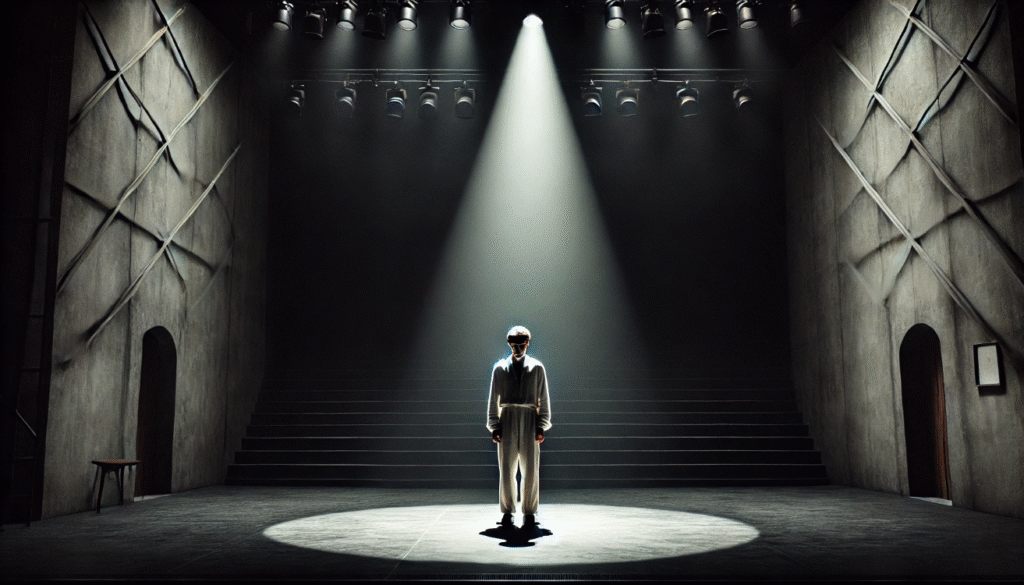 The stylistic features of Shakespearean soliloquies are a timeless testament to his literary brilliance, showcasing his mastery of language, character development, and emotional resonance. These iconic monologues play a crucial role in enhancing narrative depth by providing insight into characters’ inner thoughts, motivations, and conflicts. Through the use of poetic language, vivid imagery, and powerful rhetorical devices, the stylistic features of Shakespearean soliloquies captivates his audience and brings his characters to life in a way that has resonated across generations. The stylistic features of Shakespearean soliloquies serve as a window into the human experience, inviting readers and audience members to empathize with the struggles, desires, and internal turmoil of the characters.
The stylistic features of Shakespearean soliloquies are a timeless testament to his literary brilliance, showcasing his mastery of language, character development, and emotional resonance. These iconic monologues play a crucial role in enhancing narrative depth by providing insight into characters’ inner thoughts, motivations, and conflicts. Through the use of poetic language, vivid imagery, and powerful rhetorical devices, the stylistic features of Shakespearean soliloquies captivates his audience and brings his characters to life in a way that has resonated across generations. The stylistic features of Shakespearean soliloquies serve as a window into the human experience, inviting readers and audience members to empathize with the struggles, desires, and internal turmoil of the characters.
Definition and Importance of Soliloquies:

The stylistic features of Shakespearean soliloquies is a dramatic device in which a character speaks their inner thoughts out loud, usually when they are alone on stage. This allows the audience to gain insight into the character’s motivations, feelings, and conflicts. In Elizabethan theater, the stylistic features of Shakespearean soliloquies were commonly used as a way for characters to express their inner turmoil or to reveal their true intentions. They were also a way for playwrights to provide exposition and advance the plot. The stylistic features of Shakespearean soliloquies plays, soliloquies are particularly important as they serve as a medium for characters to connect with the audience on a deeper level. They allow the audience to understand the complexities of the characters and their internal struggles, creating a more engaging and immersive experience.
Language and Poetic Devices in Soliloquies:

Shakespeare’s use of vivid imagery in his works allows him to paint complex emotions in a way that resonates with his audience. For example, in Hamlet, the famous soliloquy “To be or not to be” is filled with vivid imagery that captures the inner turmoil of the protagonist as he contemplates life and death. In addition, Shakespeare often uses metaphors and analogies to provide insight into his characters’ inner conflicts. These metaphorical expressions allow the audience to gain a deeper understanding of the complexities of the characters’ emotions and motivations. Furthermore, Shakespeare employs rhetorical devices such as repetition, antithesis, and rhetorical questions to engage the audience and create a sense of drama and tension in his plays.
Structural Features of Shakespearean Soliloquies:
Iambic pentameter is a poetic rhythm that consists of five metrical feet per line, with each foot containing two syllables, one unstressed and one stressed. This rhythmic pattern mirrors the natural cadence of speech and can enhance the delivery of emotion by creating a sense of flow and musicality. When Shakespeare deviates from verse and transitions into prose, it often signifies a shift in the character’s state of mind or emotional intensity. Prose is typically used for lower-class characters or moments of heightened emotion, allowing for a more natural and colloquial expression of thoughts and feelings. Pauses and line breaks in poetry can reflect a character’s psychological state by creating moments of reflection, hesitation, or emotional turmoil.
Psychological Depth and Characterization:

Soliloquies in literature serve as a window into the character’s psyche, offering insight into their inner thoughts and emotions. They provide a platform for characters to express their deepest desires, fears, and conflicts. For example, in Shakespeare’s Macbeth, the soliloquy “Is this a dagger which I see before me?” reveals Macbeth’s intense ambition and guilt as he contemplates the murder of King Duncan. In Othello, the soliloquy “It is the cause, it is the cause, my soul!” showcases Othello’s overwhelming jealousy and susceptibility to manipulation. Soliloquies allow readers to delve into the moral dilemmas and internal conflicts of characters, providing a deeper understanding of their motivations and actions.
Audience Engagement Through Soliloquies:
Breaking the fourth wall is a technique that allows a character to directly address the audience, creating a sense of intimacy and connection. This can help to foster a stronger bond between the character and the audience, as it breaks down the barrier between the two and allows for a more personal and engaging experience. Soliloquies, on the other hand, play a crucial role in fostering empathy and understanding by allowing a character to express their inner thoughts and feelings directly to the audience. This can provide insight into the character’s motivations and struggles, helping the audience to better understand and relate to their experiences. Emotional resonance is also important in creating a connection between the audience and the characters.
Thematic Exploration Through Soliloquies:
Shakespeare’s soliloquies play a crucial role in exploring key themes in his plays. In “Hamlet,” the soliloquy on life and death delves into the existential struggle and contemplation of mortality. In “Macbeth,” soliloquies on ambition reveal the character’s inner conflict and moral deterioration. In “Romeo and Juliet” and “Othello,” soliloquies on love and betrayal provide insight into the characters’ emotional turmoil and internal conflicts. Overall, soliloquies serve as thematic anchors in the plays by allowing characters to express their inner thoughts and feelings, providing deeper understanding of the central themes and conflicts.
Dramatic Function of Soliloquies:
In literature or theater, soliloquies can be a powerful tool for advancing the plot by revealing pivotal decisions or foreshadowing future events. By allowing a character to share their inner thoughts and intentions with the audience, soliloquies can provide crucial insight into their motivations and the direction of the story. Additionally, soliloquies can also be used to build tension by shedding light on unresolved conflicts or hidden motives within the narrative. This can create a sense of anticipation and unease as the audience becomes aware of the underlying tensions and potential confrontations that may arise. Furthermore, soliloquies can enhance dramatic irony by allowing the audience to have knowledge that the other characters do not.
Comparison with Other Playwrights:

Shakespeare’s innovative use of soliloquies set him apart from his contemporaries by giving his characters a platform to express their inner thoughts and emotions directly to the audience. This allowed for a deeper understanding of the characters and their motivations, creating a more intimate and immersive experience for the audience. Shakespeare’s influence on modern storytelling techniques can be seen in the continued use of soliloquies and monologues as a way to convey a character’s innermost thoughts and feelings. This technique has been widely adopted in literature, theater, and film, allowing for a more nuanced and complex portrayal of characters and their inner struggles.

Shakespeare’s mastery of language, structure, and psychology in soliloquies is truly remarkable. His ability to craft deeply introspective monologues that reveal the inner thoughts and emotions of his characters is unparalleled. Through his use of poetic language, dramatic structure, and insightful exploration of human psychology, Shakespeare created soliloquies that continue to captivate and resonate with audiences today. Soliloquies remain relevant and studied today because they provide a window into the human experience. Shakespeare’s exploration of universal themes such as love, ambition, jealousy, and despair in his soliloquies allows audiences to connect with the characters on a deeply personal level.













